The basement might not be a special room for most people. However, there are several ways in which you can use your basement for. And if you decide to use the basement, then it is really necessary to make it soundproof just as any other room.
According to the report of Forbes, building the basement ceiling will usually cost from $1.60 to $2.50 per square foot. However, you would not need to spend a lot of money to soundproof a basement ceiling.
Because soundproofing for your basement ceiling can be fast, cheap, and really satisfying. Also, proper basement ceiling soundproofing can greatly reduce upstairs noise heard in the basement and basement noise heard upstairs.
In this article, we have shared 7 best and cheapest ways to soundproof a basement ceiling, so that you can turn it into a home office or your kid’s study room. Also, here we have discussed the different types of noise in the basement.
So, let’s get started.
Table of Contents
Types of Noise in the Basement
The basement is the area just laid the main house or one of your bedrooms below, so it is obvious whatever you do in the house will make some noise and will pass the same to the basement.
So the basement will face two types of noise problems, one is airborne noise and the other is impact noise.
Airborne noise is the most common of all like it the noise generated due to whispering, noise from music, outside traffic, or any sound generated from the top of the basement.
But impact noise is most specific with the flooring or ceiling as the name itself suggests it is generated due to footsteps or squeaky shoes on the top of the ceiling, any machine vibrating on top of the basement, or any object falls on the top of the ceiling.
In all cases, the noise will generate a structure vibration and obviously will be the same experience in the basement.
Hence I decided to look around both and brought a common solution that worked for me and now for you too. In addition, I also shared some cost-effective products which you probably need while soundproofing the ceiling.
I feel, I shared all the qualified information you need before working on the soundproof basement ceiling, so let me highlight all ways.
7 Cheapest ways to SoundProof Basement Ceiling
Whatever I suggested look around all of them and find an opportunity where you have the current lack and that is the only way to optimize your budget perfectly.
As I said i also referred to the material which I used for soundproofing so if you want you can check them out on Amazon.
1. Fill the Gaps and Cracks
The most common mistake which we mostly overlook but you might have some areas in your house from there whether the cable is going down to the basement or intentionally opened to pass fresh air.
But that causes a real reason for passing airborne noise through and the most common principle is if air can pass through any area the resultant noise will definitely pass through and the same I explained here.
So let’s find out each corner of the basement which links somewhere to the outer or upper side of the basement ceiling and use the best acoustic sealant.
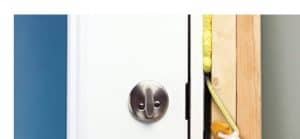
Well, acoustic sealant is a material that works best to seal air gaps even the small one and this is flexible enough to stand for a long time without a single crack.
Well if you want the one I used then I suggest go ahead with the best waterproof acoustic sealant by Auralex.
I found most of the gaps around the door which was connecting the basement with the top floor, so make sure to block every single crack or gap you found around the door and its frame joints.
2. Use the Underlayment or Rugs
This material is quite useful as this does not need under the basement ceiling but needs over the basement ceiling I must say on the flooring of the top floor.
Well, the favorite way to absorb both impact or airborne noise is to create a high-density surface that actually blocks or stops the passing of noise through.
You might have wooden flooring, which is most sensitive around impact noise, and also every noise originating in the room reflects around the hard surfaces and flooring too.
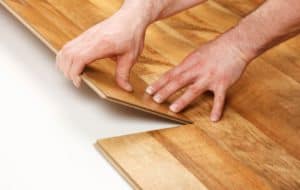
So why can’t you add a carpet which is thicker in size and heavy enough and create a strong density over the flooring what it does is due to its soft behavior this becomes a great source of noise absorption.
I have used Home Ultra Premium All Floors Rug Pad that gave me exclusive and strong absorption of the noise.
This will reduce noise reflection and ultimately stop passing that noise to the basement.
But the addition of the carpet is one solution but the other area which you work on is beneath the top floor covering just above the subfloor.
First, remove your floor covering and add an underlayment just below, that will add another layer of high density and create a strong barrier for the noise.
Don’t know what underlayment is and how to use them and how it can impact the impact noise then must read an exclusive guide on the underlayment.
But if curious about which underlayment I used then does check on this best insulating underlayment by Robert.
Let’s move on to the next method.
3. Use Insulation Materials
It is obvious that no one cares about the basement ceiling a lot and even I was on the same list or maybe you too and that is the reason you might have left a lot many cavities in the joist.
This cavity can play a great role in blocking noise if got filled using any insulation material
Hence use the best mineral wool insulation material and fill almost all the cavities, then as a result, it will increase the density of the ceiling.
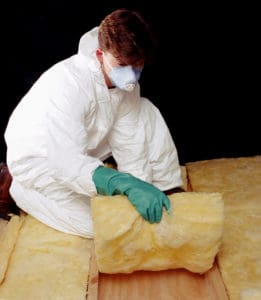
As the density or the mass will increase the sound absorption ability of the ceiling will also increase and in a result less transmission of noise to the basement from the top floor.
Well, I used the natural cotton Multi-Purpose Insulation by Frost king and this worked a lot.
I strongly suggest must use insulation as it is cheaper in price and most effective against noise.
4. User Drywall on Top of the Ceiling
Well installing drywall is the only thing where I invested most of the money but why this is needed and how this can help reduce the noise?
Here I am referring to the soundproof drywall which has an STC score of more than 52, here STC means sound transmission class which defines the ability of any material to block noise.
So use the soundproof drywall to cover the top of the cavity of the ceiling or the complete ceiling which is already filled with insulation material.
Now imagine, how strong the barrier you are creating against the airborne and impact noise.
Drywall will almost double the density of the existing basement ceiling and it will not be easier for any noise frequency to first pass through the top ceiling then insulation then after the drywall barrier.
Well, I used the Drywall by Stella and only 4 packs were good enough to cover my complete ceiling.
5. Use Resilient Channel for Decoupling
Previously we discussed the drywall and the use of mineral wool insulation over the top of the basement ceiling.
But the use of a resilient channel will increase the insulation up to the next level, so here the point is where to use this and why?
A resilient channel is used on top of the joist to create an air pocket then drywall should be connected to those resilient channels.
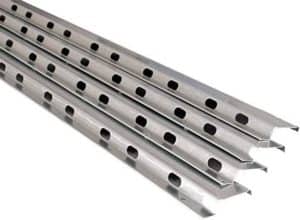
This resilient channel will create an air gap or decoupling zone of up to 1/2″ so that all the noise will get trapped and lose most of the energy due to changes in the medium.
This is the most effective way to trap the noise and in addition, you can use green glue to dissipate most of the noise energy into the heat form.
Use the combination of green glue in between the cavities as it is viscous in nature so whatever noise will enter to that area will get dissipated its most of the energy in the form of heat.
I have used the Resilient channel by Auralex and Green glue by Green Glue itself
Isn’t is something which you can try easily?
6. Use Mass Loaded Vinyl
As we all aware, if you increase the mass of any material as a result it creates a strong barrier for the noise but ultimately increases in the overall width of the material.
But Mass loaded vinyl or MLV has different nature than others as it has a great mass-to-width ratio, a thin sheet of MLV you can stick to either top flooring or just above the drywall of the basement ceiling.
MLV sheet block almost all the gaps or holes left at the joints and it is a great source of insulation against any noise, so must try MLV the results will be amazing.
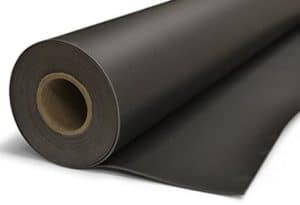
In addition, you can also use a bass trap to block the noise coming in from the joints of the ceiling with the walls,
Bass traps are designed in 90-degree angles to block the noise, so those can be fir to any corner including the basement flooring.
I recommend you try the MLV sheet by soundproofingMLV and the 90-degree angle Acoustic Bass trap by well-known JBER.
7. Rearrange the Furniture Positioning
This is the easiest thing you can work on instantly if you can place any material on top of the basement then must do that.
Find out any rug, mat, or table, or sofa if you can place in the middle or over the top of the basement then this at least minimize the impact noise.
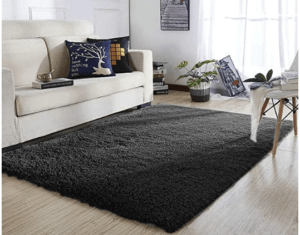
Placing any soft thing will also absorb the noise and reduce the noise reflection, you can also use Acoustic foam on the wall from where you found most of the noise reflection.
Use the acoustic foam of a pyramid shape as that having a higher NRC ratio as compared to any flat foam.
Well, I hope you got the best and cheapest ways to soundproof a ceiling, which I used myself and almost worked a lot.
Wrap Up On Soundproof A Basement Ceiling
These are some of the cheapest ways to soundproof a basement ceiling. And these are also some of the easiest DIY projects that you can implement immediately and will take most probably a couple of hours to complete.
However, you should remember that you can also use a combination of these methods to get the best results. And definitely, no one wants to spend a lot of time in the soundproofing process of a room that will only be used occasionally.
So, we hope that this article has given you some tips on how you can soundproof a basement ceiling on a relatively low budget. And if you have any more queries about any of these methods, please leave a message in the comments below.
FAQ: Soundproof A Basement Ceiling
A lot of people don’t know how expensive it would be to soundproof a basement ceiling, so they are always looking for some of the cheapest ways to do it and they have many questions about it. Here I have answered some of the most frequently asked questions on this topic.
Q1. Is It A Good Idea To Insulate The Basement Ceiling?
Ans: Insulation in the basement ceiling can help to keep your home more energy-efficient and can also reduce noise levels. Another effective way to keep your home comfortable is to do careful maintenance of your heating and cooling systems.
Q2. Is It Worth It To Soundproof The Basement Ceiling?
Ans: Soundproofing the basement ceiling can help to keep sound from disturbing people in the basement and it also cuts down on sound traveling upwards and being a distraction. It might not be a big issue if a basement is not being used, however, sounds from below that affect your dining room, living room, and other rooms can become serious issues.
Q3. How Much Does It Cost To Install A Soundproof Ceiling?
Ans: Soundproofing costs generally depend on the size of the project, however, you would usually need to spend around $10 to $30 per square foot for professional installation from a local soundproofing professional and also materials.